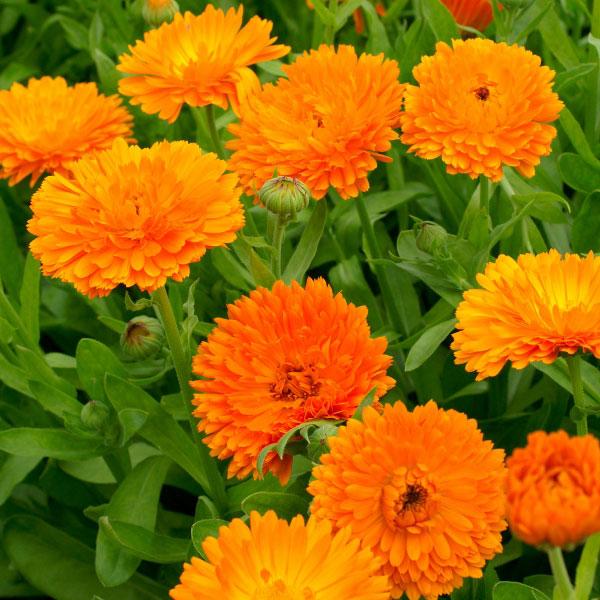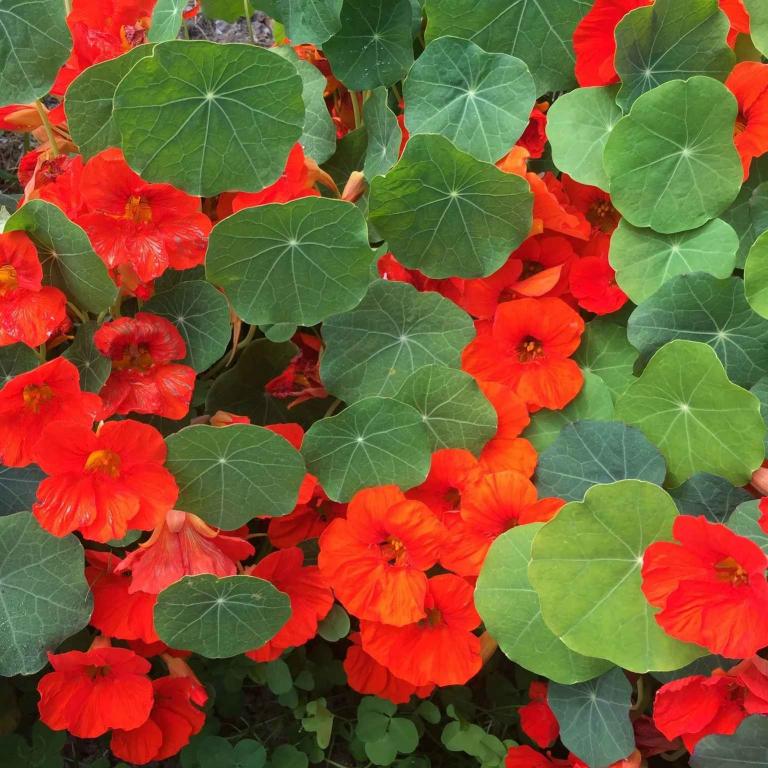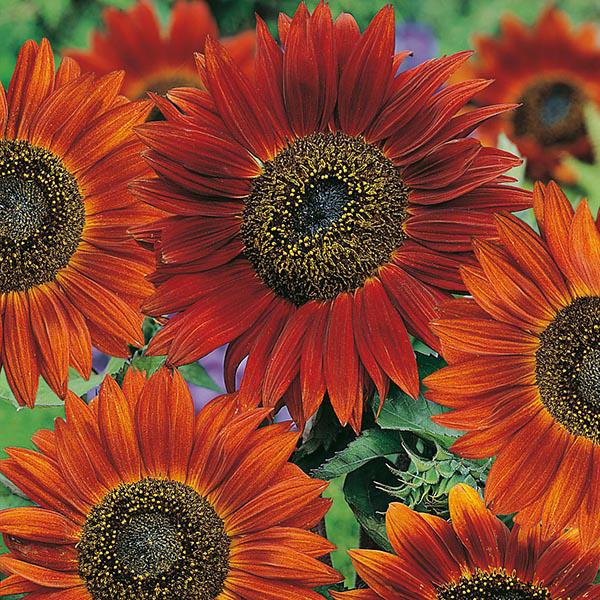Hidcote Garden Collection
Hidcote is a world-famous garden located in the north Cotswolds, a stone’s throw from Stratford-upon-Avon. Created by the talented horticulturist, Major Lawrence Johnston, its colourful and intricately designed outdoor ‘rooms’ are always full of surprises. It’s a must-see if you’re on holiday in the Cotswolds.
Throughout May at Hidcote the self-sown Welsh Poppy, Papaver cambricum, makes for a colourful addition to borders and path edges where the seed has settled. A packet of annual seeds can take the strain as Spring flowers come to the end and Summer borders gather momentum.
Lottie Allen, Head Gardener Hidcote Garden

Calendula Orange King
Calendula officinalis
Calendula Orange King is exactly as its name would suggest, with brilliant orange double flowers in April and May on bright green foliage. If they are planted in clumps they seem to glow at night and reach a height of 45-60cm.
Calendula is a genus of about 15–20 species of annual and perennial herbaceous plants in the daisy family Asteraceae that are often known as marigolds. They are native to southwestern Asia, western Europe, Macaronesia, and the Mediterranean.
The genus name Calendula is a modern Latin diminutive of calendae, meaning "little calendar" or "little clock". The common name "marigold" refers to the Virgin Mary. The most commonly cultivated and used member of the genus is Calendula officinalis, the pot marigold. Popular herbal and cosmetic products named "Calendula" invariably derive from Calendula officinalis.

Nasturtium Empress of India
Tropaeolum majus
Nasturtiums are easy to grow, vigorous annuals with large disc-shaped leaves that smell like capers and bright flowers from mid-summer onwards. They’re a magnet for bees and can be used to lure small and large white butterflies away from brassica crops. Tropaeolum majus ‘Empress of India’ is a non-trailing nasturtium, bearing deep red, semi-double flowers in contrast with purple-green leaves.
Imported to Europe by Spanish conquistadors around 1500, the nasturtium was introduced as a vegetable, along with the potato and tomato. First documented by Spanish botanist Nicolás Monardes in 1565, the nasturtium was noted as reaching England by John Gerard in 1597. At that time, the nasturtium was known to British growers as “Indian Cress” due to its origins in the Americas, then known as the Indies. It received its common name “nasturtium”—which in Latin translates to “nose-twister”—from Renaissance botanists due to its peppery flavor and spicy fragrance similar to watercress (Nasturtium officinale).
Both delicate and bold, the nasturtium has been a beloved subject of artists since the Victorian era. The nasturtium’s shape, color, and habit have inspired artists of all mediums –notably Claude Monet, who grew nasturtiums annually along the walk of his gardens at Giverny.

Sunflower Claret F1
Helianthus annuus
Noted for its reliability and good garden performance, Helianthus annuus 'Claret' (Common Sunflower) is a fast-growing, well-branched annual with broad, oval to heart-shaped, roughly hairy leaves. In summer, it produces large, rich wine-red flowers, up to 6 in. across (15 cm), with deep red-brown petals surrounding a nearly black central disk. The flower heads are attractive to bees, butterflies and birds. The seeds harvested from grown plants are edible and can be used in snacks and in baking. Easy to grow and sensational at the back of a sunny border, this exquisite Sunflower makes outstanding cut flowers too.
A common misconception is that flowering sunflower heads track the Sun across the sky. Although immature flower buds exhibit this behaviour, the mature flowering heads point in a fixed (and typically easterly) direction throughout the day. This old misconception was disputed in 1597 by the English botanist John Gerard, who grew sunflowers in his famous herbal garden: "[some] have reported it to turn with the Sun, the which I could never observe, although I have endeavored to find out the truth of it." The uniform alignment of sunflower heads in a field might give some people the false impression that the flowers are tracking the Sun.
Visit our full collection of National Trust seeds, inspired by Hidcote, including
CALENDULA Orange King
CALENDULA Sherbet Fizz
CALIFORNIA POPPY Golden West
NASTURTIUM Empress of India
POPPY Ladybird
POPPY Falling in Love
SUNFLOWER Claret F1
SWEET PEA Air Warden
SWEET PEA Leamington
SWEET PEA Spencer Waved Mixed
